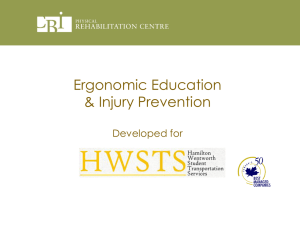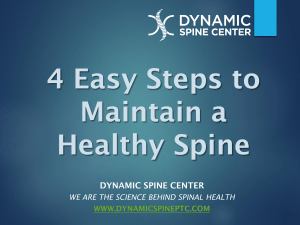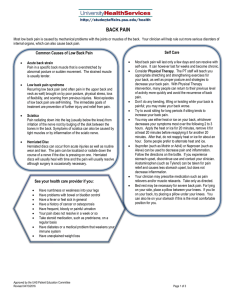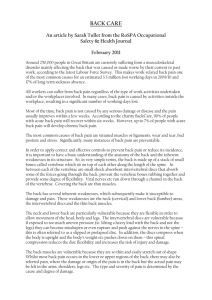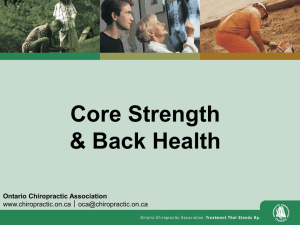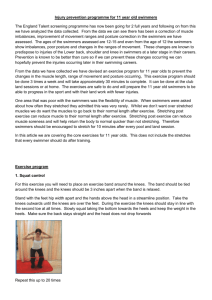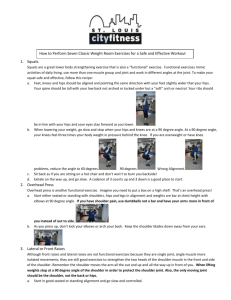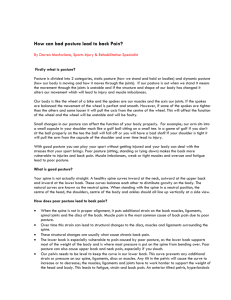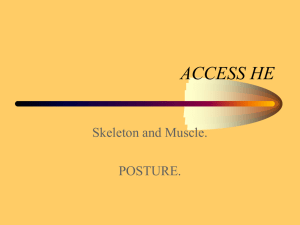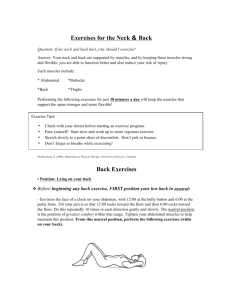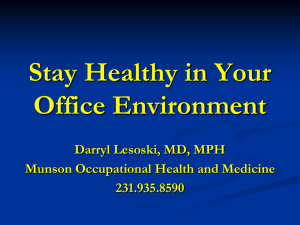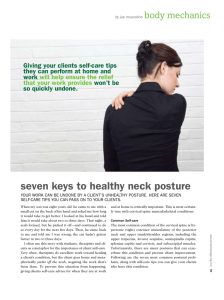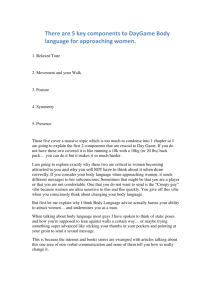6 Bad Postures That Are Ruining Your Health & How To
advertisement
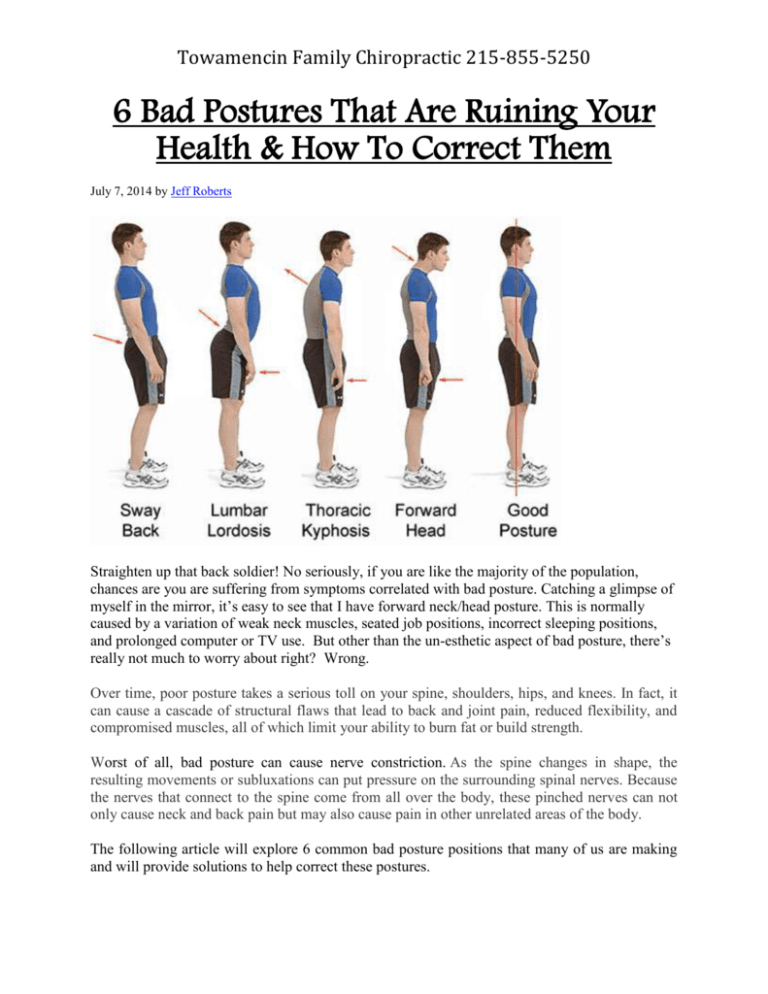
Towamencin Family Chiropractic 215-855-5250 6 Bad Postures That Are Ruining Your Health & How To Correct Them July 7, 2014 by Jeff Roberts Straighten up that back soldier! No seriously, if you are like the majority of the population, chances are you are suffering from symptoms correlated with bad posture. Catching a glimpse of myself in the mirror, it’s easy to see that I have forward neck/head posture. This is normally caused by a variation of weak neck muscles, seated job positions, incorrect sleeping positions, and prolonged computer or TV use. But other than the un-esthetic aspect of bad posture, there’s really not much to worry about right? Wrong. Over time, poor posture takes a serious toll on your spine, shoulders, hips, and knees. In fact, it can cause a cascade of structural flaws that lead to back and joint pain, reduced flexibility, and compromised muscles, all of which limit your ability to burn fat or build strength. Worst of all, bad posture can cause nerve constriction. As the spine changes in shape, the resulting movements or subluxations can put pressure on the surrounding spinal nerves. Because the nerves that connect to the spine come from all over the body, these pinched nerves can not only cause neck and back pain but may also cause pain in other unrelated areas of the body. The following article will explore 6 common bad posture positions that many of us are making and will provide solutions to help correct these postures. Towamencin Family Chiropractic 215-855-5250 Rounded Shoulders The problem: The sternoclavicular joints are unstable, therefore the body recruits the pectoris minor muscles to stabilize the joint. This brings the shoulder forward. With the shoulder forward, the upper trap turns on helping to support the shoulder from the neck. There is also a relationship with the thoracic spine & the sternum. The exercise described recruits global muscles to do the work of the postural muscles what happens is that for a short period of time holding through these muscles works then the muscles fatigue and the person falls back into the poor posture. The fix: Lie facedown on the floor, with each arm at a 90-degree angle in the high-five position. Without changing your elbow angle, raise both arms by pulling your shoulders back and squeezing your shoulder blades together. Hold for five seconds. That’s one rep; do two or three sets of 12 reps daily. Changing posture has to happen by working the postural muscles which are deep to the global muscles. Forward Neck/Head The problem: Stiff muscles in the back of your neck. Towamencin Family Chiropractic 215-855-5250 The fix: Moving only your head, drop your chin down and in toward your sternum while stretching the back of your neck. Hold for a count of five; do this 10 times a day. Be careful not to push too hard or you will risk shifting your vertebra, which can lead to constant headaches. Anterior Pelvic Tilt The problem: There is a lack of support through the transverse abs and usually the lower 2 lumbar vertebra are unstable which is why the body tightens up the psoas & iliacus. There is often unstable hip joints due to stretched joint capsules as well. The fix: Kneel on your left knee, with your right foot on the floor in front of you, knee bent. Press forward until you feel the stretch in your left hip. Tighten your butt muscles on your left side until you feel the front of your hip stretching comfortably. Reach upward with your left arm and stretch to the right side. Hold for a count of 30 seconds. That’s one repetition; do three on each side. Elevated Shoulder Towamencin Family Chiropractic 215-855-5250 The problem: The muscle under your chest (running from your ribs to your shoulder blades) is weak. This is often the Levator scapula muscle in spasm, supported by a tight upper trap. The fix: Sit upright in a chair with your hands next to your hips, palms down on the seat, arms straight. Without moving your arms, push down on the chair until your hips lift up off the seat and your torso rises. Hold for five seconds. That’s one repetition; do two or three sets of 12 reps daily. Pigeon Toes The problem: This problem is a bit too complex to sum up in a sentence, however some contributing factors to pigeon toes may be weak muscle support from the glutes, bone deformities, arthritis, and more. The fix: Lie on one side with your knees bent 90 degrees and your heels together. Keeping your hips still, raise your top knee upward, separating your knees like a clamshell. Pause for five seconds, then lower your knee to the starting position. That’s one rep. Perform two or three sets of 12 reps on each side daily. Duck Feet Towamencin Family Chiropractic 215-855-5250 The problem: Again, this problem could be caused my many factors. One contributing factor may be that your oblique muscles and hip flexors are weak. The fix: Get into a pushup position with your feet resting on a stability ball. Without rounding your lower back, tuck your knees under your torso, using your feet to roll the ball toward your body, then back to the starting position. That’s one rep. Do two or three sets of six to 12 reps daily. Assess Your Posture Right Now! Wear something form-fitting and take two full-body photos—one from the front, one from the side. Relax your muscles and stand as tall as you can, feet hip-width apart. Then refer to the fix-it plan (below left) to diagnose your posture problems. 1 / Look at your ear. If it’s in front of the midpoint of your shoulder, your head is too far forward. 2 / Can you see your shoulder blade? That means your back is too rounded. 3 / If your hips tilt forward and you have a belly pooch (even if you don’t have an ounce of fat on your body) and your lower spine is arched significantly, this means you have an anterior pelvic tilt. 4 / Look at your shoulders. One shouldn’t appear higher than the other. 5 / Check out your kneecaps. Do they point inward, causing your knees to touch when your legs are straightened? 6 / See if you’re duck-footed. Your toes will point outward more than 10 degrees. There you have it! Correcting poor posture while you are young will help prevent further more severe complications in the future. Try these corrective procedures and let us know how they work for you in the comment section below
